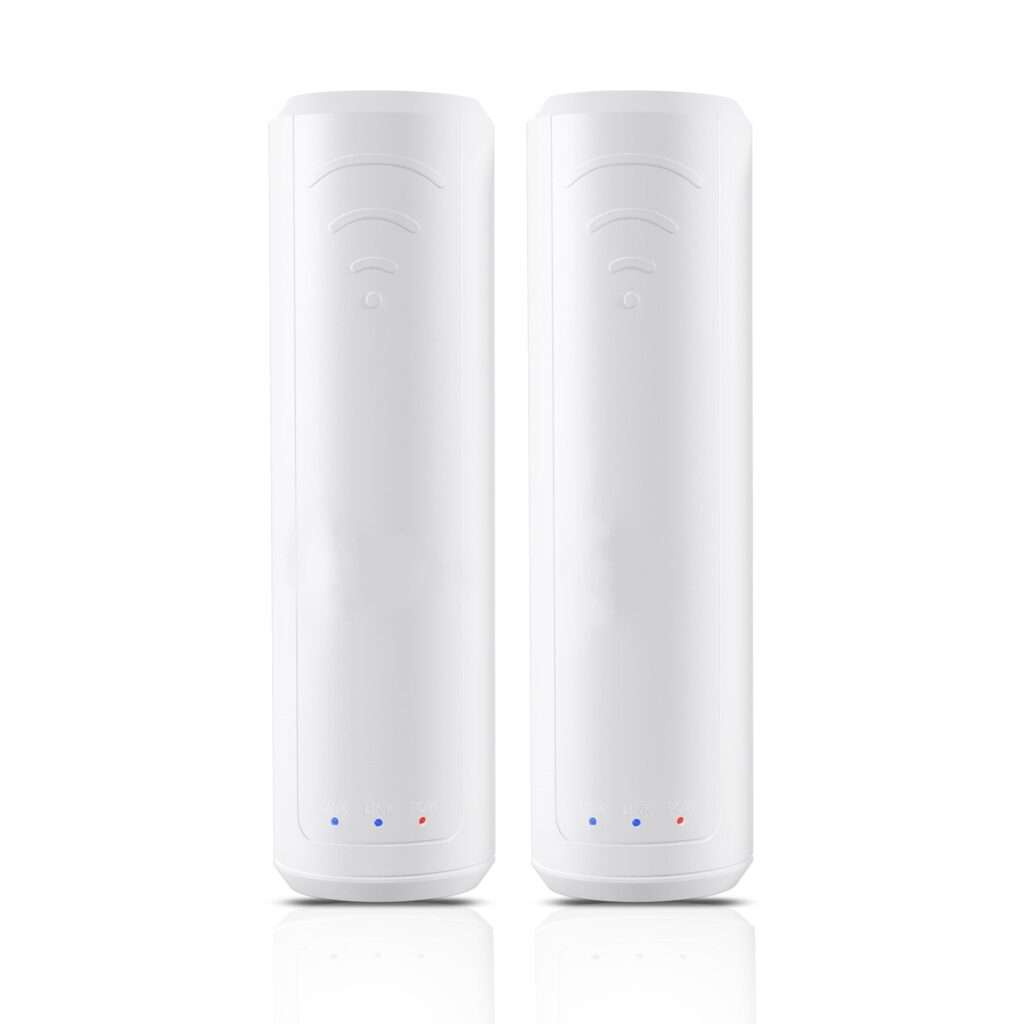If you are Australian, having a shed is like having kids, almost everyone has one. Need WiFi in your shed? Read on...
Getting internet to an outdoor building isn't always as straight forward as it should be. WiFi is a low output power and high frequency medium that does not penetrate well or reach far. In order to make WiFi effective it must be in close proximity.
Network cable isn't always a solution either as ethernet cable length is limited to max 100 meters. So how are you supposed to get internet to an outdoor shed /office?
How To Extend WiFi/Internet to a shed or outdoor building
If the outdoor building is within 100 meters then the best solution is to lay an ethernet cable, this gives the best performance and zero latency. But, sometimes this isn't possible or cost effective. Lets look at the wifi alternative.
To extend internet to an outdoor shed the most obvious solution is to make use of an outdoor point to point WiFi link. This involves installing ethernet cabling from the main house router to the roof where a point to point WiFi bridge unit is installed.
On the outdoor building/office/shed the same has to happen, an outdoor WiFi bridge unit is installed on the roof with ethernet cable leading down in to the shed. At the end of the ethernet cable a single device can be connected or if needed a WiFi access point can be installed that will provide WiFi coverage to that area.
This particular WiFi point to point link can reach as far as 5km's as long as the buildings have line of sight (No obstructions in the way). Greater distances are achievable with different equipment.
Interested in a pre configured WiFi point to point kit shipped to you in Australia?
Interested in a DIY project? We can pre configure all the needed hardware and post to you. All you need to do is drill holes and mount the antenna poles, zip tie the point to point WiFi devices to the pole mounts and then plug in all the cables. All of this should be doable in an hour if you have the correct tools.
The pre configured kit includes all the equipment necessary to create a point to point WiFi link to your shed that then provides WiFi access in the shed via a plugin dual band WiFi extender. All you need is a drill, ladder and screwdriver.
Alternative Solution: Long Range Extenders Based on 802.11AH HaLow Standard
What is 802.11 HaLow?
IEEE 802.11ah is a wireless networking protocol utilising sub 1 GHz license-exempt bands to provide extended range Wi-Fi networks, compared to conventional Wi-Fi networks operating in the 2.4 GHz and 5 GHz bands.
Devices operating on the 802.11ah standard have longer range than the usual 2.4GHz and 5GHz Wi-Fi devices due to the propagation characteristics of lower frequencies.
What does all of this mean?
A Wi-Fi product based on the 802.11ah standard will get better range and object penetration than traditional wifi systems. BUT, at the expensive of lower speeds.
The speed of 802.11ah systems designed for Australia is limited to maximum of 15 Megabits per second. Whilst modern 802.11ax (WiFi 6) can do multiple hundreds of Megabits per second.
How usable is 802.11ah speeds?
As the speed limit is around 15 Megabits per second on 802.11ah, it should be enough for up to 3 simultaneous HD Netflix streams, as Netflix requires 5 Megabits per HD (High Definition) stream.
It will however not meet the requirements for a UHD (Ultra High Definition aka 4k) stream which requires 25 Megabits.
What range can I expect from 802.11ah devices?
In our testing we found that in open air direct line of sight, 802.11ah extenders connected at up to about 600 meters in urban areas.
We also tested having one extender unit in a brick house connecting to another 802.11ah extender up to 100 meters away.
Can an 802.11ah extender work better than a traditional Wi-Fi extender?
Yes, 802.11ah have better penetration and longer range at the expensive of lower speed. If you have an outdoor building, shed or granny flat where traditional Wi-Fi just doesn't reach then 802.11ah would probably work.
WiFi To Shed - Frequently Asked Questions
There are a bunch of ways. The best way is with ethernet cable, but you are limited to 100 meters and it could be costly to dig trenches.
The second best way is with a Wi-Fi Point to Point Link, the WiFi link creates an "invisible cable connection". This type of connection is explained in the article above.
Speed on the Wi-Fi point to point link can reach up to 200Mb/s in one direction which is more than enough to extend WiFi/Internet to a flat, shed or house.
We also have 802.11ah long range Wi-Fi extenders that can reach 600 meters in open areas (line of sight) and a maximum speed of 15 Megabits per second.
Maybe, it really depends on how far your shed is from the main router and if the signal can be boosted with a directional WiFi client bridge unit.
How does it work you ask?
A WiFi client bridge with a powerful directional antenna can be placed on the shed roof that grabs the weak WiFi signal from your main WiFi router. The grabbed signal is then re-broadcast with a WiFi access point in your shed. This sort of acts like a traditional WiFi extender on steroids.
Also see our new addition: 802.11ah long range WiFi extenders ,these units are plug and play should be usable in a shed within about 30 meters away.
Most likely not. You would need a solution with high gain antennas, as explained above.
Need Onsite WiFi Assistance?
Are you in Brisbane and need onsite WiFi assistance? Click on the link to our WiFi Installation Service







